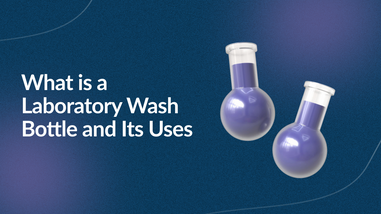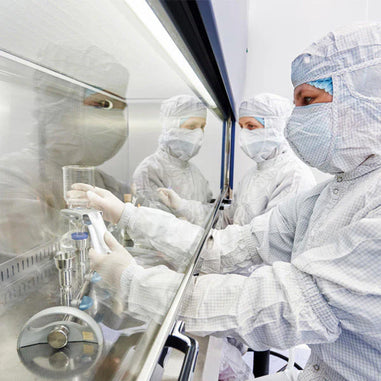- No products in the cart.
As a result of California’s progressive cannabis testing compliance program, cannabis testing labs must meet an ever-higher operating standard. In 2019, the state’s third phase of testing standards came into effect, mandating the testing for a handful of new attributes for all cannabis products intended for industrial, commercial, or consumer use.
Cannabis testing laboratories who want to stay ahead of the curve need to master the techniques required by the state’s guidelines while also preparing to scale up their operations in response to rising demand. They’ll also need to anticipate the laboratory supplies which they’ll need on an ongoing basis as part of their standard set of testing operations so that they don’t run afoul of the state’s requirements.
What Needs to be in a Cannabis Testing Panel?
According to the California Cannabis Control Bureau, all cannabis harvested after 2018 must comply with the latest iteration of the state’s testing guidelines. In summary, these guidelines include testing schedules for:
- Cannabinoid content
- Moisture content
- Solvent and processing chemical impurities
- Pesticides
- Bacteria
- Microfungi
- Homogeneity
- Heavy metals
- Mycotoxins
- Terpenoids
- Other foreign materials

Before 2018, the guidelines only specified that testing laboratories should test for cannabinoid content, moisture, solvents, pesticides, bacteria, and microfungi. The updated phase 3 guidelines issued for 2019 added mycotoxin, heavy metal, and terpenoid testing to the list while also clarifying that other foreign materials constituted anything other than the intended product’s makeup. Meeting the phase 3 guidelines should be within the means of most cannabis testing laboratories that are currently in operation, though newly opening labs will find that the additional startup costs implied by the new guidelines may be daunting if they are approached incorrectly.
For most laboratories, the biggest addition to the guidelines was the added requirement of testing for heavy metal, as many labs were performing terpenoid testing and mycotoxin testing as part of their standard product quality assurance routine. Mycotoxin testing is commonly bundled with a lab’s microfungal testing regimen because mycotoxins are created by microfungi, meaning that it is convenient to test for both contaminants at the same time.
In contrast, the reason for terpenoid testing being common despite not being mandated until 2019 is that terpenes influence the flavor and subjective experience profiles of cannabis products for consumer use, meaning that assaying the terpenoids in a cannabis product is useful for developing discrete product lines which specific features sought after by customers. Thus, the largest challenge in meeting the state’s guidelines will be to develop heavy metal testing regimens.
Which Cannabis Testing Methods Comply with California’s Guidelines?
To meet California’s cannabis testing requirements, laboratories need to implement a handful of different testing methods. The testing method required varies with respect to the thing being tested for. In most cannabis testing businesses, laboratories will need a combination of visual inspection, chemical assays, and sophisticated analysis hardware like high pressure liquid chromatography (HPLC) machines if they want to meet the state’s guidelines, but testing businesses which only handle one part of the testing schedule may be able to get away with a non-comprehensive testing suite.
Testing for Cannabinoids and Terpenes
Cannabinoids and terpene testing are necessary to characterize the mixture of psychoactive chemicals inside of a cannabis product. Because cannabinoids and terpenes are classes of chemicals, a given testing lab is typically responsible for both a bulk metric which describes the concentration of all of the chemicals within each class of chemical as well as a more detailed breakdown of the concentration of the most common chemicals within each class.
This means that the best tool for the job is HPLC, which provides both sets of information in the same run of analysis. HPLC reagents are notoriously costly if they’re purchased from the wrong supplier, however. Thus, cash-strapped cannabis testing labs may find that it is more economical to perform a less expensive test like ELISA to get a bulk measurement before proceeding to HPLC for a more detailed measurement.
Testing for Impurities, Pesticides, and Heavy Metals
Testing for impurities, pesticides, and heavy metals can also be performed with an HPLC machine, but many labs use ionization-based mass spectrometry instead because of its slightly more favorable cost profile. While there are a handful of technical differences between HPLC analysis and ionization-based mass spectrometry, the primary difference is that ionization-based mass spectrometry is purely analytical, whereas HPLC can retain the individual components which it identifies for further processing or use.
This difference is important because when using HPLC to identify cannabinoids and terpenoids, manufacturers and testing labs may want to retain specific groups of each chemical to use in their products. On the other hand, nobody wants to retain heavy metal or pesticide contaminants, both of which may be harmful to human health if consumed. Thus, mass spectrometry can be used to identify the presence of heavy metals or pesticides in a sample which can then be purified further if necessary with a run of HPLC.
Testing for Biological Contamination
Unlike testing for other important criterion, testing for biological contamination in the form of bacteria and microfungi is relatively simple with the help of a PCR machine. By running a sample of the cannabis product through PCR and examining the resulting genetic transcripts for traces of bacterial or fungal DNA, detecting contamination is very quick and inexpensive. The equipment which labs need to get started is a thermocycler or a more advanced PCR machine —but, on a shoestring budget, a heating block and a stopwatch will do the trick.
Testing for mycotoxins is even easier. While mycotoxins might be detectable via mass spectrometry or HPLC, these expensive techniques are not necessary to determine whether a sample has been contaminated. Many companies sell cheap mycotoxin testing strips which turn red when exposed to common mycotoxins. The primary challenge for labs integrating mycotoxin testing to comply with the state’s guidelines will thus be to find a mycotoxin testing system that provides a measure of automation or added efficiency, as most mycotoxin testing methods require an abundance of manual effort.
Testing for Success
In summary, cannabis testing laboratories need a handful of different testing competencies if they want to keep up with the state’s requirements while also maintaining a high-efficiency operation. Furthermore, staying in good standing with the state will require cannabis testing companies to continue their testing operations unimpeded by shortages of essential supplies or the time of key personnel. Complying with California’s guidelines for cannabis testing will subsequently be significantly easier for laboratories who team up with a laboratory goods supplier who can anticipate their needs for reagents, hardware, and other essential goods.
For over 40 years, Lab Pro has been committed to providing equipment and reagents for companies which test consumer products in California and worldwide. Come visit the biggest Lab Supply showroom in California, or contact us online or at 888-452-2776.



















































